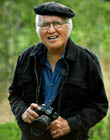|
|
 
|
|
Author
|
Topic: "The Robe" restored for Easter 2009
|
Monte L Fullmer
Film God

Posts: 8367
From: Nampa, Idaho, USA
Registered: Nov 2004
|
 posted 12-15-2008 01:03 PM
posted 12-15-2008 01:03 PM




EDIT: got the fubar all straightened out ...
PAGE below tells the story:
Working Over The Robe With the Lowry System
First 'Scope Movie Restored in HD, on Tape, and to Preservation Negs
By Debra Kaufman
November 20, 2008 Source: Film & Video
The Robe,” which premiered on September 16, 1953, was more than a typical Hollywood sword-and-sandal epic: it was also the first-ever film to be released in CinemaScope, a widescreen format that used anamorphic lenses to create a 2.55:1 aspect ratio. The story of a Roman tribune who wins Jesus’ robe after being responsible for crucifying him and then is driven by guilt to learn more about him, The Robe—which was directed by Henry Koster and shot by Leon Shamroy, ASC—was touted as “the first picture on the miracle curved screen,” and a spectacle that didn’t require special glasses.
Schawn Belston, VP of library and technical services at 20th Century Fox, reports that the restoration—at Lowry Digital in Burbank—was a collaboration between the Film Foundation, the Academy Film Archive and Fox. “The reason we chose this title was because it’s important historically as the first CinemaScope film,” he says. “And it posed certain challenges from a restoration point of view because it was in pretty bad shape.” Belston, who has worked with Lowry Digital before, says Lowry Digital was "uniquely qualified" to deal with the restoration. “The original camera negative contains a large number of dupe negatives, and the work required a large amount of [the type of] image processing that Lowry is well-known for.”
Lowry Digital, a subsidiary of Adlabs Films of India, has developed a proprietary “Lowry System” for digital restoration, says COO Mike Inchalik, who reports the company has restored over 400 films. The first step in restoring The Robe was to screen the Academy’s surviving release print. That screening was attended by Lowry Digital restoration artists and colorists to see the benchmarks they would try to reach.
The restoration process began by scanning the elements at 4K resolution with the company’s two Imagica film scanners. “The original camera negative had many, many areas where dupe negative was slugged in 12 or 14 times over the last years,” says Inchalik, who reports the original neg was an early generation Eastman Color. “The dupe negatives came from different labs, on different film stocks and at different periods of time.” Other elements included B&W reels of the YCM separations made of the original camera negative.
The Imagica scanners were ideal for handling the elements, says Inchalik. “There are three things you want to worry about when you’re handling older films. You want to be able to transport it gently, so you need good tension control to make sure you’re not pulling the film under duress, and Imagica’s transport does that. Imagica also does a very good job of having its pins tapered enough so it fits into holes of every size. They have a lot of safety features, so the risk of damage to the film is nonexistent. Third, Imagica does color accuracy really well. Particularly with older films, they do an extremely good job at scanning the full tonal range, which is important when you’re dealing with material that’s faded and you’re trying to extract every bit of color information.”
With many film aficionados proclaiming that film’s resolution is at least 6K, was a scan at 4K sufficient to capture all the information? “We did testing with Fox to demonstrate that it was enough,” says Inchalik. “The rule of thumb is that you should digitize at twice the resolution to get everything. First, you have to think about the smallest piece of grain, since it’s the grain that captures the photons of light and turns it into dye or silver. The other factor is how good the lens is that’s able to focus light onto the film plane. For The Robe, the grain was larger because it was older film stocks. The lenses of that era also reduced the resolution.”
In fact, the soft resolution of those lenses was one of the challenges in restoring the film. “The lenses used at the time were quite soft and had certain kinds of distortion,” Inchalik explains. “The photography itself was a little soft and a little more challenging than you’d like. And, of course, we were dealing with dupes, and dupes of dupes, and were trying to put those together in a way where it looked seamless. The amount of detail that was lost was impossible to reverse, which was what made this an extraordinary technical challenge.”
In an ideal world, the lowest common denominator would be high enough to match, making the end result seamless. “In this case, unfortunately, the lowest common denominator was so contrasty and absent of detail that you wouldn’t have wanted to pull the rest of the movie to that place,” he says.
Belston also noted that the digital restoration was intended to retain the film’s original look. “It had a specific anamorphic quality,” he says. “You can definitely see on the sides of the image a kind of distortion. We could have removed it digitally or minimized it but we decided to be as close to the original 2.55:1 presentation of the film as possible.”
After scanning, the film was color-corrected with Lowry Digital’s Baselight color correction system. Next came the Lowry Process, a Linux-based proprietary temporal image processing technique to regain detail and resolution and reverse the effects of duplication such as grain build-up, softening and excess contrast.
“The basis of our process is trying to improve the look of each individual frame by mathematically borrowing information from surrounding frames,” says Inchalik. “We get detail from surrounding frames and are correctly able to insert it where necessary to give a higher resolution result. To do that correctly, you can’t just look in the same area but know if something has moved frame-to-frame, where it is and what belongs to what. That technology is called motion estimation and we do that at an extremely precise level.”
Inchalik notes that “artifacts fall into categories. If you want to level out sharpness and grain throughout a movie and you get to an optical section where you’re dealing with a copy of a copy, we’re able to increase resolution,” he says. “The key behind it all is that if you’re able to correctly track what goes on from frame to frame, you can assess what belongs. If I have a piece of dirt in one frame, with nothing like it on the frames on either side, I know it doesn’t belong there. But to know that, I have to know where everything on all the frames is going. The highlight on an earring as a head turns might look like a piece or dirt, but if I can figure out it’s moving appropriately from frame to frame, I won’t remove it.”
Scratches are tougher, says Inchalik, since a scratch that moves might look like a telephone pole in the distance while the camera pans. “If my scratch is moving and the camera is stationary, it may tell that it’s not obeying the law of physics,” he says. “Still, you do need manual intervention to take out what the computer left in. The key is to make restorations affordable by making computers as smart as possible, and keep people working on the places where you need artistry.”
The restoration of The Robe took three months to complete. Lowry Digital delivered digital LTO tape, multiple preservation negatives for different archives, and HD masters. Belston, who says he is “thrilled” by the restoration, reports The Robe will get a Blu-ray release for Easter 2009. “A restoration is a labor of love,” says Inchalik. “If you haven’t seen the 'before,' you’ll never realize how far it came. Everything is judged by the final result.”
EDIT: got the fubar straighten out...sorry on the triple post there - don't know what happened... - MONTE
“
[ 12-15-2008, 04:18 PM: Message edited by: Monte L Fullmer ]
| IP: Logged
|
|
|
|
Christian Appelt
Jedi Master Film Handler
Posts: 505
From: Frankfurt, Germany
Registered: Dec 2001
|
 posted 12-16-2008 04:54 PM
posted 12-16-2008 04:54 PM




quote: Monte L Fullmer
In fact, the soft resolution of those lenses was one of the challenges in restoring the film. “The lenses used at the time were quite soft and had certain kinds of distortion,” Inchalik explains. “The photography itself was a little soft and a little more challenging than you’d like."
That doesn't make sense to me. When I saw a vintage print of THE ROBE at the Schauburg CinemaScope festival (June 7, 2008), I was surprised to see how good the (faded) Eastman print looked. It was a 4-track mag print shown at 2.55, made up from both Eastman color and Technicolor IB parts. The latter were more grainy, still had all colors but had less sharpness and resolution.
The faded Eastman footage obviously contact printed from the camera negative had excellent sharpness and no visible problems connected with the primitive Chrétien anamorphic adapter other than a slight distortion during moving camera shots. They must have stopped down very far to get the most out of the "Hypergonar" lens.
Since the negative cannot have less resolution than a vintage contact print, I doubt Mr Inchalik's statement. Of course the dupe negative parts, being two generations removed from OCN, will have to look soft and more grainy, but this certainly is not true for the OCN and vintage eastman contact prints.
I'm looking forward to see what they did in that restoration.
| IP: Logged
|
|
|
|
|
|
|
|
|
|
|
|
|
|
|
|
|
|
|
|
|
|
All times are Central (GMT -6:00)
|
|
Powered by Infopop Corporation
UBB.classicTM
6.3.1.2
The Film-Tech Forums are designed for various members related to the cinema industry to express their opinions, viewpoints and testimonials on various products, services and events based upon speculation, personal knowledge and factual information through use, therefore all views represented here allow no liability upon the publishers of this web site and the owners of said views assume no liability for any ill will resulting from these postings. The posts made here are for educational as well as entertainment purposes and as such anyone viewing this portion of the website must accept these views as statements of the author of that opinion
and agrees to release the authors from any and all liability.
|

 Home
Home
 Products
Products
 Store
Store
 Forum
Forum
 Warehouse
Warehouse
 Contact Us
Contact Us




 Printer-friendly view of this topic
Printer-friendly view of this topic






![[beer]](graemlins/beer.gif)







